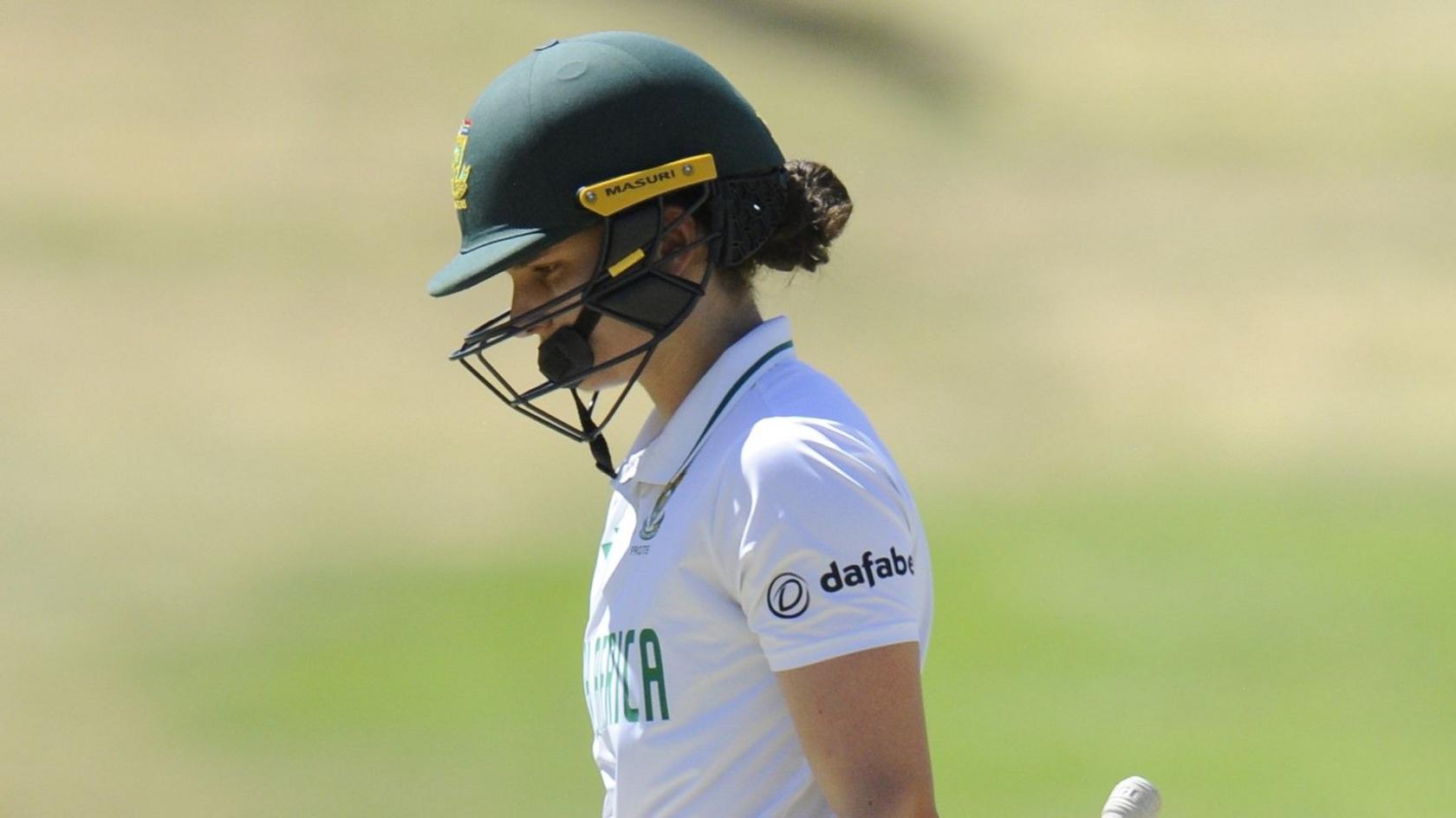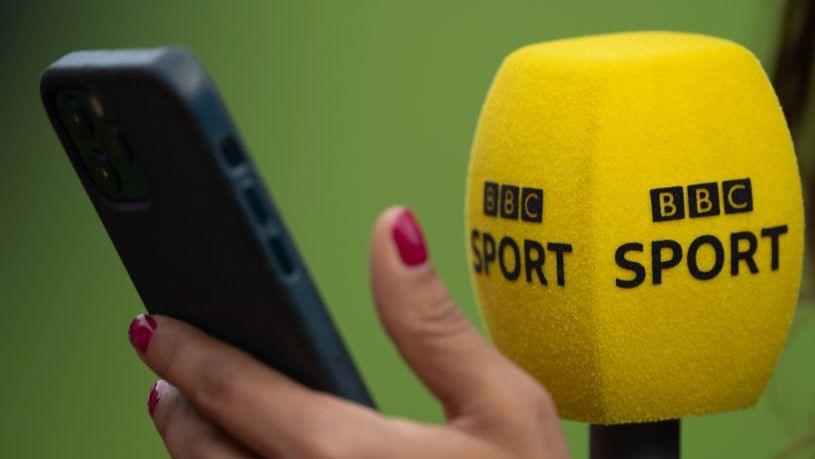'Right decision, wrong process' - lack of DRS mars women's Test

South Africa captain Laura Wolvaardt was given out lbw for 65 in South Africa's first innings but suggested she had hit the ball
- Published
Annerie Dercksen's dismissal in the one-off Test between England and South Africa was "the right decision but the wrong process", according to former England bowler Alex Hartley.
England thrashed South Africa by 286 runs to conclude their 2024 and head into January's Ashes on a high, but the match was clouded by confusion and frustration at the lack of decision review system (DRS) in place for the match.
The system is used to overturn incorrect decisions made by umpires, with teams usually given two or three reviews to use per innings.
Cricket South Africa decided not to use the system because of the cost involved, despite making profits of £35.9m last year, but it was used in the preceding white-ball series which was the first time it had been in place for a bilateral women's series in the country.
What were the talking points?
From just the second ball of the match, Marizanne Kapp and South Africa were convinced they had opener Tammy Beaumont lbw with a very convincing appeal, but it was given not out and England's opening pair proceeded to add 53 for the first wicket.
Proteas captain Laura Wolvaardt was batting fluently and looked set on steering her side to first-innings parity before she was given out lbw to Sophie Ecclestone on 65.
Wolvaardt was furious while marching off the pitch, knocking her bat to her helmet and muttering that she had hit it - a reaction for which she was eventually fined by the International Cricket Council (ICC).
But the most contentious of the decisions - despite having less of an impact on the eventual result of the match - came in South Africa's second innings when England appealed for a catch at short leg off Dercksen, and the on-field umpires proceeded to have it checked by the third umpire, much like a review.
Even with no DRS in play, umpires are generally allowed to check with the third umpire for clean catches and bump balls, instances that they might not be able to see cleanly in real time - yet in this case, the catch was taken at chest height.
"The right decision was made in the end, because it did look like there was an edge, but I just think it was the wrong process," Hartley told BBC Test Match Special.
"There was never any doubt around whether it was a clean catch or not. It's the fact that nobody knows what the decision-making was.
"What it has shown is that DRS needs to be in place for every international match and then we wouldn't be talking about it. It should be a wake-up call for Cricket South Africa."
England captain Heather Knight said it was a "sign of the status of the game" that DRS was not used for the match, which she acknowledged was "a bit frustrating".
"I was pretty shocked when I found out in the umpire's meeting the day before, that we weren't going to have it," Knight told a news conference after England wrapped up victory.
"I think it's a real shame. You come to expect it as a player now, and I guess the reason is always money. But, particularly in Test cricket, where wickets are such a premium, it's a really important thing to have."
Proteas head coach Mandla Mashimbyi said the decision not to use DRS was above his "pay grade", but bemoaned the lack of communication around the "bizarre" decision which led to Dercksen's wicket.
"There was no communication - I didn't understand why [it was out]," said Mashimbyi.
"If it's out it's out and if the umpire isn't sure, the benefit of doubt goes to the batter. It was quite bizarre, I guess the umpires felt they made the right decision so we can't go against that."
How did the Dercksen dismissal unfold?
In the ninth over of South Africa's pursuit of 351 for victory, England appeal for the wicket of Annerie Dercksen, who they believe to have been caught by Tammy Beaumont at short leg off Lauren Bell.
It is a very straightforward catch, popping up straight to Beaumont at chest height.
The standing umpire is initially unmoved and England seem disappointed.
Both umpires confer after a discussion and refer it to the third umpire, with Dercksen and her batting partner Sune Luus looking perplexed.
There is no doubt about a clean catch so the umpire checks whether Dercksen has hit the ball, and while it looks on the slow motion replay like she had, there is no Ultra Edge available to determine this with absolute certainty.
The third umpire eventually rules it as out and the South African coaching staff and Wolvaardt appear to look unhappy with the result. The Proteas head coach comes down to the boundary edge and speaks to an ICC official.
The hosts proceed to lose 7-42 and are all out for 64.
What do the playing conditions say?
According to the playing conditions, external which are written by the ICC, for a match without DRS the third umpire can only be used to check a clean catch or a bump ball.
In that instance, the third umpire does have to check whether there is bat involved or not to decide whether the wicket can be given or not.
In her post-match interview, England's Bell said that her understanding was the umpires were checking for a bump ball, which is within their right.
But it is difficult to comprehend how the umpires could not see on the field that it was a clean catch because it was not near the floor, and nobody seemed to dispute it.
Viewers were unable to hear discussions between the umpires and third umpire, as sometimes happens in other cricket matches, football and rugby.
BBC Sport has asked CSA for comment. The ICC declined to comment.
Related topics
- Published17 December 2024

- Published16 August
